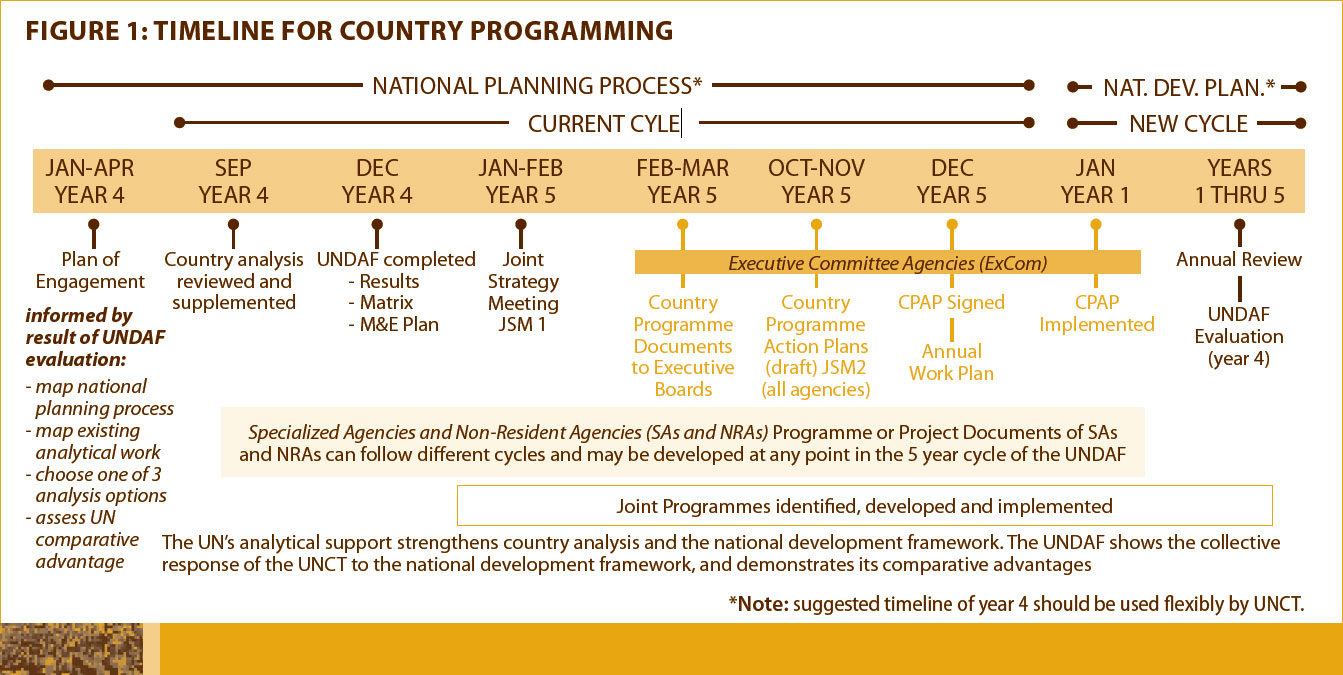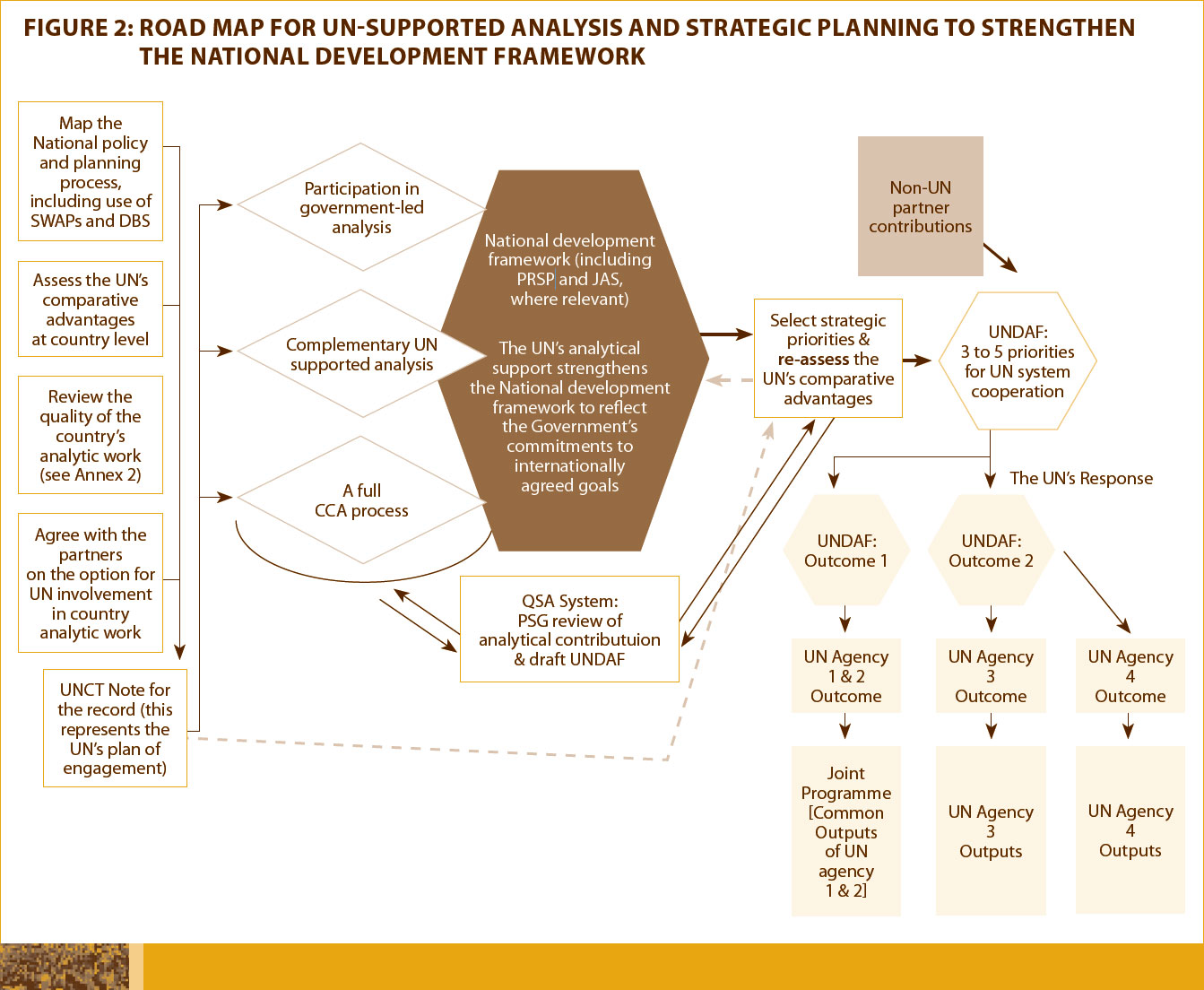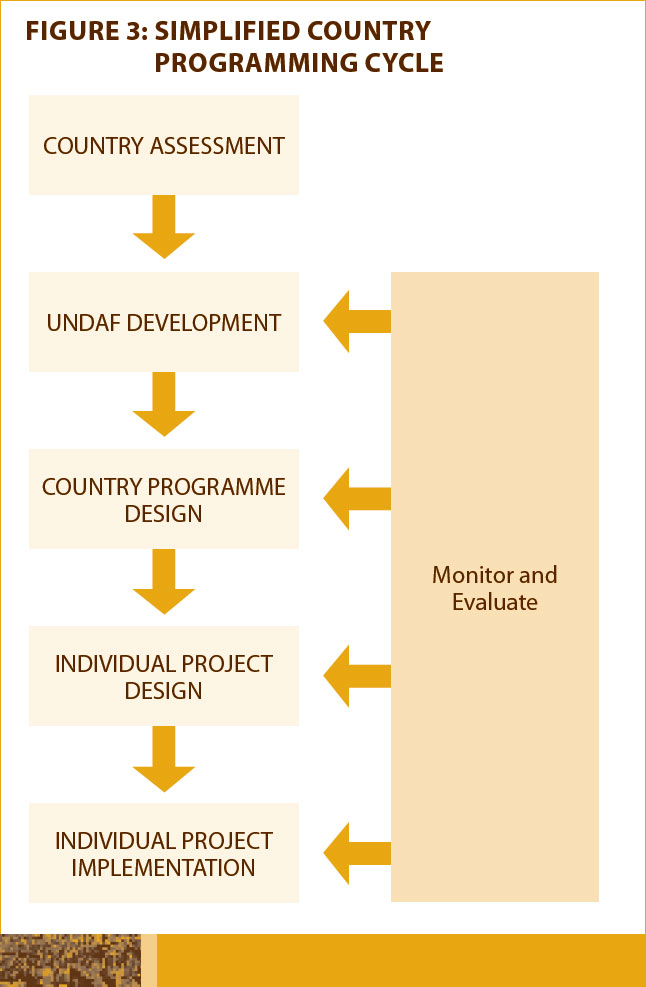6.2 UNCTs and the Country Programming Cycle
The Guidelines set timelines for country programming as well as a road map for developing a UN Development Assistance Framework (UNDAF).1 These two processes are presented below, in Figures 1 and 2, respectively. The UNDAF is based on a country assessment and sets the parameters within which Country Plans (CPs) and individual project documents will operate, usually over a five-year cycle. The entire process is based on the following principles and objectives:
- UN agencies achieve synergies through cooperation and coordination;
- UN agencies and their engagement should reflect the ‘comparative advantages’ that UN agencies bring to development;
- Development should target strategic needs, preferably as identified by the country, as well as Millennium Development Goals and other internationally-agreed goals; and
- Development initiatives should be rights-based.
This chapter describes briefly each phase of the UN development assistance process and then offers advice to UNCTs as to what considerations should apply at each phase insofar as support for NHRIs is concerned.
Annex 1: Situating NHRIs in the UN Country Planning Process


It should be noted that mapping national policy and planning processes is a UN priority and must be reflected in National Development Plans.
UNCTs should specifically consider if, when, and how best to engage with NHRIs. If there is no NHRI yet, they should consider how best to support its establishment, at each stage.
It is important, first, because establishing and strengthening NHRIs is a UN priority. Second, failure to do so could limit options for future engagement in programme delivery.
The process, in a simplified form, may be characterised as follows:

Each step informs the subsequent ones, so that activities undertaken in projects, for example, must flow from and be consistent with the country programme, which in turn must comply with the UNDAF. Everything must derive from a strategic analysis of what is possible and desirable in the country context keeping in mind the comparative advantage and value of the UN, as well as a human rights-based approach to development programming.
1 At pages xii and xiii of the Guidelines.